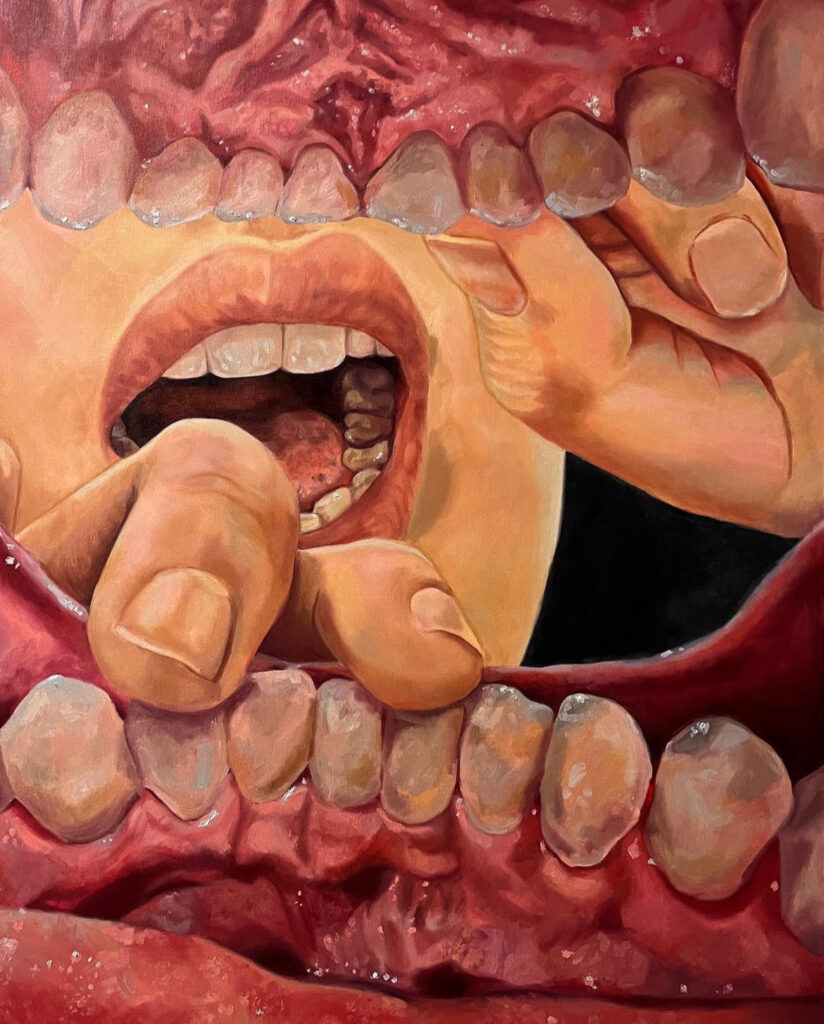
Caroline Bryant
The Southern Editor
Florida Southern College’s art department held its annual junior critique in November. The two days showcased the work of juniors majoring in different concentrations.
Critiques are another way for professors and peers in the art department to provide feedback to the juniors who will soon work on their senior thesis. Seniors can also participate in the junior critique if they didn’t have enough work at the time or if they transferred in from another department – like senior oil painter Sarah Conte.
Students select around five to seven of their best pieces to present to the entire department in the art gallery. Studio art majors present their physical work, while graphic design, game design, and film majors show either a slideshow or film.
Senior oil painter Alice DeCastro said that while students in the critique have creative freedom, most of the artwork presented by the juniors is the same due to students having similar assignments. Since their technical skills have improved since freshman year, most of the pieces presented are assignments from higher-level courses.
They don’t officially start junior year, however. Professor Kelly Sturhahn said critiques start in the classroom.
“We start actually in the classroom. With every project, every student has a critique and that starts to build their vocabulary and build their ability to speak about their work and get a little more comfortable,” Sturhahn said.
Conte said that in one of her painting classes, they vote on which painting is the best and then critique them from best to worst.
The junior critiques don’t focus on the technicality of the work. Instead, professors and students use the time to question or praise the concept behind each piece of work. In-person classes are where technique is discussed.
Though it may be blunt, Conte and DeCastro believe that classroom critiques aren’t as jarring because you show your work to the same professors and group of people. During the junior critique, the entire art department is watching you.
“As soon as you get up there you kind of just black out and go…leading up to it, it’s so nerve-wracking because everyone is looking at you, professors, some that have never seen your work before and have something to say,” DeCastro said.
And because those people have never seen it before, they don’t know the thought process behind the art. That is why Conte said it’s important to be clear and concise when describing work, as the audience might not understand the true meaning of the piece.
For instance, a student during Conte’s critique asked her why she was fascinated with painting the body.
Conte thinks the human body is disgusting. However, when she said this, the professors at the critique said her work wasn’t “disgusting enough” when reflecting her feelings about the body.


A similar comment was made toward DeCastro during her presentation.
“It’s very important to me that people are able to look at the piece and create their own dialogue because I don’t want them to be like ‘Oh, it’s whatever she has going on,’ I want them to create a relationship with it,” DeCastro said. “And they [professors] told me to make sure my pieces stand by themselves without my explanation behind them. ‘Make sure that us as an audience is able to enjoy it aesthetically and with whatever meaning we apply to it.’”
These misunderstandings or bits of constructive criticism can be difficult not to take personally. Conte and DeCastro believe junior critiques are necessary to learn how to view what feels like backlash as helpful advice.
“Whenever you hear something that isn’t positive, it’s hard not to take that as a knife to the chest because people put all of them into their work, even if it’s just for an assignment,” DeCastro said. “It’s all really specific to you and it’s your emotional baby. It’s very personal and learning to separate it is the best thing you can do. These people are trying to help and not trying to be mean.”
It’s also a great way for artists to practice in preparing and giving presentations during graduate school, as Sturhahn said other undergraduate programs tend to not have critiques at their level.
“Grad school is brutal in the art world,” DeCastro said. “It kind of gives you this practice on how to talk to a big group of peers, especially when you start getting into the adult world of art. You have to push yourself out there, you have to start putting your art into galleries, you have to beg people to have an exhibition with your work in it, you have to defend your work to everybody, not just your friends that were there with you.”
Despite the nerves, critiques are something every junior in FSC’s art department will have to do. Once finished, the gallery opens to the public. The fall 2023 gallery opened on Dec. 2.
The next big critique is the senior thesis. Senior theses, also known as artist essays or statements, are crafted and amended throughout an artist’s senior year and are presented at the senior critique for a chance to win the first-place $1,000 prize. Alum Morgan Shelton was last year’s winner.







